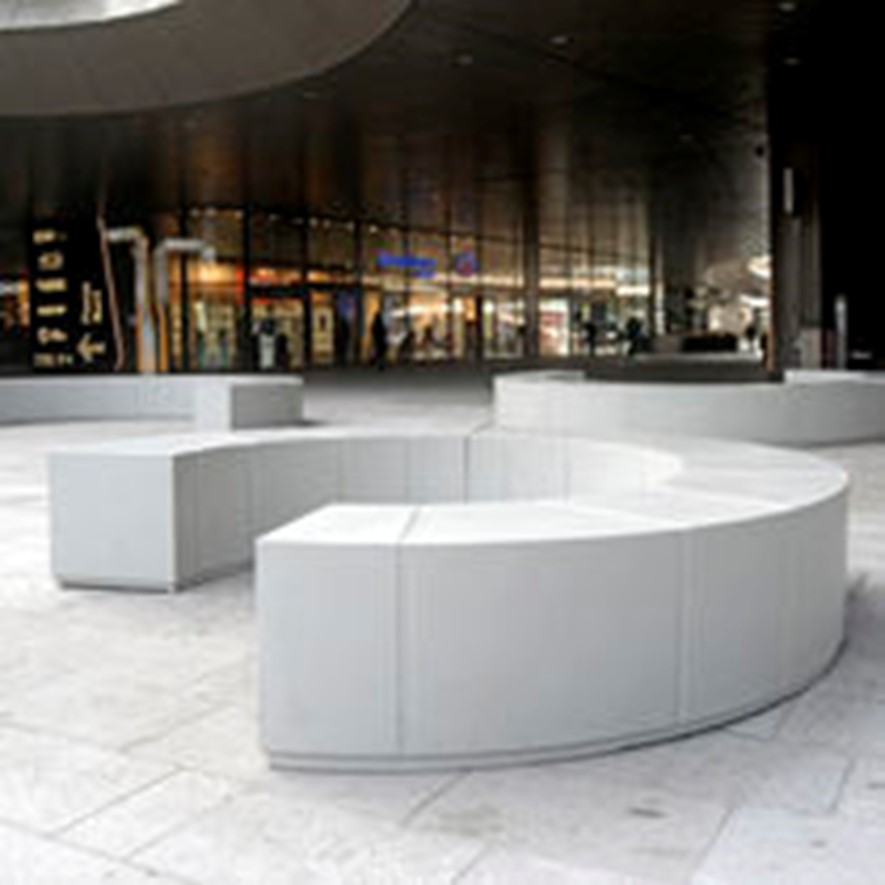I hope this doesn’t come across as one of those old “back in my Army days” narratives, but I feel compelled to share an impactful memory. I recall an old British Army Officer recruitment advert that used to grace television screens. It left a lasting impression on me, particularly as my background in the army and police has evolved into the security concept design work I now undertake globally.
The advert was of a British army officer in Africa approaching a male who was guarding an oil or water well. The man was shouting in a foreign language at the army officer until the officer removed his sunglasses. The impact of eye-to-eye contact made such a change to the attitude of the shouting male, and it emphasized the need for eye contact as a key aide to communication even when there is a language barrier. It was one of those hearts and minds moments, but I have found this skill is critical in the progression into working with clients anywhere around the globe. Even with today’s virtual meeting technology which allows people to communicate from any location with cameras and Wi-Fi, it is still not as impactful as a face-to-face meeting for developing relationships in the working environment.
That being said, it is important to have feet on the ground, build relationships among project teams and use all available tools to ensure appropriate security measures are implemented.
Security Tools
This article focuses on security design, how it fits into construction and some of the tools, resources, and options available when carrying out risk assessments such as Security Threat Vulnerability Risk Assessments (STVRA).
STVRAs come in an array of methods and layouts and they all follow simple but effective processes of explaining what threats and risks that may be present on the client’s projects and how they should consider security measures to address such potential threats/risks. It is important to understand that the intent of the STVRA is to identify and communicate the key security risks and not to address every threat.
Security is often treated as an afterthought, hastily added to projects as they near completion. It is essential to emphasize the pivotal role of security in contemporary construction projects, ensuring it is recognized as a fundamental pillar of success. This necessitates integrating security considerations during the project’s conceptual design phase.
Security should be considered in the same vein as we do now with safety. Safety took a very long time to be embedded within the construction industry but it’s fully integrated now and companies realize the importance of safety and its impact if ignored. This mindset should be the same for security.
There are many examples of security as an after-thought, especially with the ever-evolving threat of terrorism. Who would have thought that in this day and age London Bridge would end up with the most dreadful looking anti-vehicle mitigation measures situated along its paved areas?
London Bridge with added HVM measures
It is important to note that the approach to security should be proportionate and pragmatic and correlated to the project scope. The most robust methodology for managing security today is to use a holistic approach for the overall security concept.
Physical, operational, cyber, and personnel security concepts should align and complement one another, as they are interrelated. This will ensure that clients are assured of comprehensive security coverage, consolidated within an Integrated Security Management System (ISMS). A holistic security approach that is both proportional and aesthetically acceptable to the project team and key stakeholders is crucial for achieving success.
Building Information Modeling (BIM) is the security consultants’ best friend when working security into the design concept. Having a knowledge and appreciation of the software products that are used in BIM is a must have. Developing a basic knowledge of BIM and a knowledge of the software required, better lends to ensuring the security concept is embedded early and is viewable to the key personnel in the construction conceptual design.. The STVRA should be used as a lever to initiate security involvement at this critical early design stage of the project.
Some versions of STVRA’s can be complicated with figures and algorithms which can be difficult to comprehend even for other security practitioners. Keep it simple to achieve your goal and refrain from terminology that causes confusion or misinterpretation. To increase the likelihood of engagement from the construction and design team, the documentation should be written in such a technique that it articulates and demonstrates:
– What needs to be protected
– Why it needs such protection
– How that protection can be achieved
A good approach is to write the report like a “story book” to ensure it is easily understood. The use of effective scenario diagrams based on credible worst-case scenarios, help to visualize the threats and the need for the use of the security recommendations.
The recommended mitigation techniques should be based on proven methods such as:
– Security by Design
– Crime Prevention Through Environmental Design (CPTED)
– Defense in Depth
– Design out Crime
These elements aid in illustrating the application of security across diverse environments. They involve close collaboration with architects and structural engineers, as well as integrating security considerations seamlessly into spatial layout massing modeling. This approach ensures that security measures are both discreet and seamlessly integrated, offering inspiration while remaining imperceptible to the untrained eye.
Examples of CPTED measures
Finally, there are many resources of information freely available on websites such as in the UK, the website National Protective Security Authority | NPSA. This site also allows application for increased access privileges based on function within an organization.
It is also important to work with local law enforcement. They have a volume of information to assist and will want to be involved as it is in their interest, especially in the three concepts listed earlier. Design Out Crime Officers can assist with connections to Counter Terrorism Security Advisors (CTSA) for specific regions if you consider your threats to include terrorism.
In summary, maintaining a grounded approach, fostering team relationships, and leveraging all available resources are crucial for implementing adequate security measures.
David Connolly, Principal, recently joined the London SM&W office with over 30 years’ experience stemming from a military and police background. David has a vast amount of experience in security procurement and the management of security supply chain contracts which complement his skills and experience in ensuring compliance of contractual and legal requirements. David’s focus is on the development of security within the design and built environment for implementation of robust and effective security requirements during the construction and the completed built asset.





